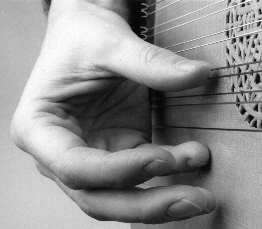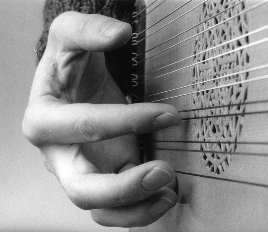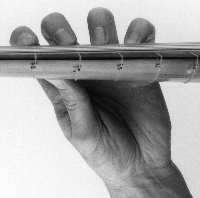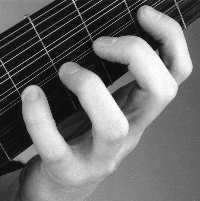 |
 |
|||||||||||||
| |
||||||||||||||
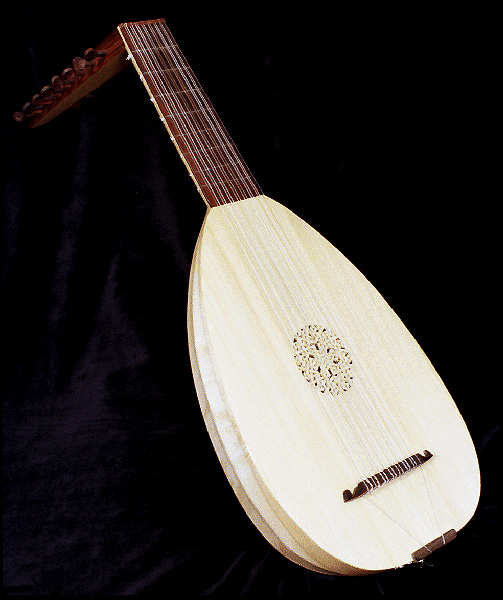 |
Playtechnique The technique used in playing a lute depends greatly on the style of music and the particular instrument being played – especially the size and number of strings it has. However, in almost all cases, the technique used for playing a lute will differ substantially from that taught today for classical guitar. Lesson 1: Your choice for a particular position will depend on your body size, the size of your lute, and your personal aesthetic preferences. Whatever your choice, two considerations must remain paramount: Your playing position should provide the maximum possible body relaxation; and the left (fingerboard) arm and hand should not be involved in securing the instrument's position. When you sit with an upright posture towards the front of a chair, the lute will touch your body in three places. The first place is your thigh; the second place is your chest and stomach; the third place is your right underarm. Your left arm initially hangs relaxed along side your body. A piece of leather on your thigh can prevent the lute from slipping out of position. Lesson 2: The Right Hand Hold the lute from the end of the body. Place the tip of the little finger on the soundboard between the bridge and rosette about two centimeters away from the first course. The fingers are held more or less parallel to the strings. Now execute the following sequence over and over again: Lesson 3: The Left Hand Place the extended left-hand thumb on the under half of the lute neck against the index and middle fingers. Your fingertips are positioned closely before the frets, so that, in the words of the great lutenist, J.B. Besard (1617), "... they do not touch the frets but nonetheless are placed immediately next to them".
Lesson 4: Single Line Play this exercise over and over again. Very slowly. Concentrate on: 1. The exact placement of the left hand fingers. 2. Establish a precise contact with both strings by momentarily placing their respective thumb/fingers of your right hand before you pluck. Start plucking with the thumb alone, later try to make the alternating stroke between thumb (I) and index (.) finger. The
right hand of Nigel North as he plays on a 13-course Baroque
Lute. ( 6 sec playing time/without sound) Artworks of the past
provide some information about the angle of the right hand relative
to the strings and the distance from the bridge where the strings
were plucked. Much less information is available about how the
hands moved while playing. Some players probably kept the right
hand fixed in one position, while others, as described by Alessandro
Piccinini and Ernst Gottlieb Baron, apparently moved it around
quite a bit to achieve contrasts in tone color, as Nigel does
here.
For further details go to: http://www.luteonline.de/six_short_lute_lessons_1.htm |
|||||||||||||
